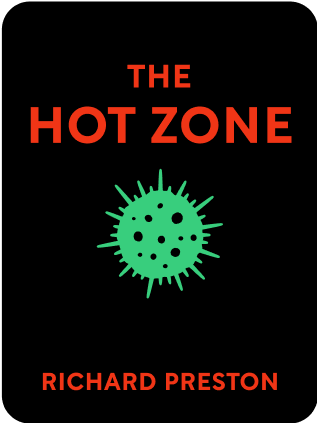

This article is an excerpt from the Shortform summary of "The Hot Zone" by Richard Preston. Shortform has the world's best summaries of books you should be reading.
Like this article? Sign up for a free trial here .
Who is Richard Preston? Why did he write the book The Hot Zone, and what did he learn?
Richard Preston is a writer and researcher, who writes about science, infectious diseases, and more. Richard Preston wrote The Hot Zone about known Ebola outbreaks, and possible origins of the disease.
Read more about Richard Preston, his research, and his visit to Kitum Cave.
Richard Preston: Writing The Hot Zone
The Ebola virus is greatly feared, but not well understood. Scientists know the virus jumped to humans from African monkeys, but they don’t know where the virus originated or how it infected the monkeys in the first place.
Ebola virus has appeared only a handful of times and, despite being highly infectious, it has never spread to become a full-blown epidemic. However, Ebola’s brutal attack on victims’ bodies, astronomical kill rates, and ability to mutate make it a constant potential threat.
The Hot Zone by Richard Preston explores how Ebola and its family of viruses affect humans, the history of known outbreaks, and the possibility of a future epidemic.
Richard Preston Explores Kitum Cave Cautiously
Four years after Ebola Reston hit the monkey house, the author, Richard Preston, took his own journey to Kitum Cave. Preston wanted to look around the cave, where the subject of all his research presumably originated.
When he arrived near Kitum Cave, he set up camp in the same area where Charles Monet had camped on New Year’s Eve, 13 years earlier. The Hot Zone by Richard Preston explores Charles Monet’s case and other.
The author knew all too well the risks the cave held. In an abundance of caution, he brought all the pieces of a Level 4 biological space suit for fieldwork, including a mask with air filters. He even brought bleach to decontaminate his suit after exiting the cave.
As the author approached and explored the cave, he was acutely aware of every possible virus host and exposure risk that he encountered, including:
- The nettles on the path to the cave that created tiny punctures in the skin, and which could carry the virus
- The swarm of moths and other flying insects that whirled around the mouth of the cave
- Sharp salt crystals that lined portions of the walls and roof
- Sharp fragments of rock scattered on the ground
- The guano (bat droppings) of fruit- and insect-eating bats that covered many surfaces of the cave
- Abruptly low ceilings in certain places, which made it easy to bump and cut your head
- Spiders that lived deep in the cave, which could have contracted the virus from insects they ate, and which could infect a person with a bite
Parallels to AIDS
In Preston’s route to Mount Elgon, he had to travel a stretch of the Kinshasa Highway, which stretched across Africa east-to-west, passing through Kenya, Uganda, and the Democratic Republic of Congo. When sections of Kinshasa Highway were paved in the 1970s (several sections still remain unpaved), the amount of traffic along the route boomed, ultimately leading to the spread of AIDS.
The origin of AIDS was just as murky as the origin of Ebola, but most experts agreed the viruses probably jumped to humans from primates in the same region around Mount Elgon.
When Ebola emerged, infections erupted like wildfire, quickly spreading and rapidly killing its victims. By contrast, HIV’s outbreak was a slow burn, because it incubated for years before its victims finally died.
Scientists have struggled to develop a vaccine for AIDS because the virus mutated so quickly. In fact, an infected person could die with multiple strains present in her body—all of which mutated from the single strain that originally infected her. The virus’s rapid adaptability also made it extremely resilient in the face of changes.
Could AIDS and Ebola Be the Earth’s Defenses?
Richard Preston mused that viruses like Ebola and AIDS could be the planet’s natural method of defending against the boom of human population and development. These and other emerging viruses originated in ecosystems under duress, and the strain was often due to human encroachment.
The Hot Zone by Richard Preston explores the many cases of Ebola, as well as major outbreaks. A violently deadly disease, Preston, like many others, was determined to understand the disease, to no avail.

———End of Preview———
Like what you just read? Read the rest of the world's best summary of Richard Preston's "The Hot Zone" at Shortform .
Here's what you'll find in our full The Hot Zone summary :
- The many different strains of Ebola, including the deadliest kind with a kill rate of 90%
- How scientists unraveled the mystery of a new strain of Ebola
- How Ebola could become airborne, becoming one of the deadliest viruses known






